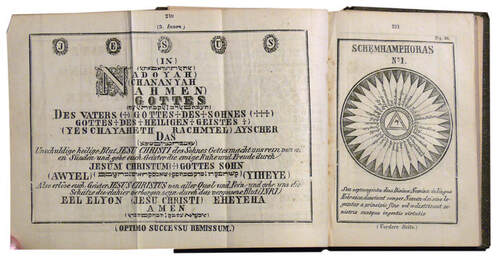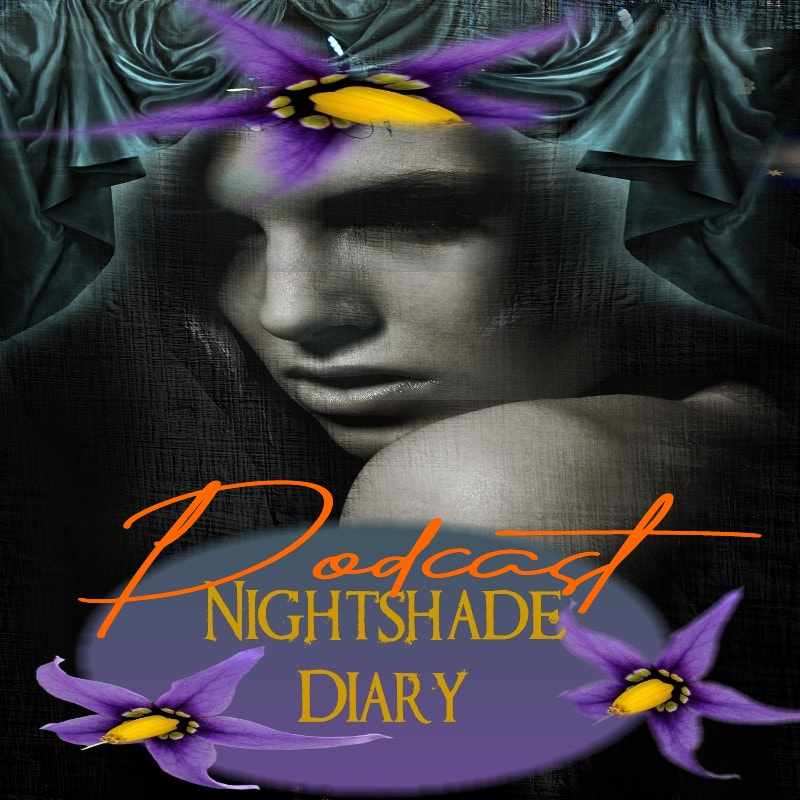 By M.P. Pellicer | Stranger Than Fiction Stories There is a ritual tradition that spans three centuries practiced by Dutch settlers in Pennsylvania known as "hexerei"—witchcraft of evil intent, and "braucherei"—casting of spells with intent to do good and faith in "pow-wow doctors".  Sixth and Seventh Books of Moses - One of the earliest American grimoires is John George Hohman's Pow-Wows; or, Long Lost Friend, a collection of magical spells originally published in 1820 for Pennsylvania Dutch spiritualists known as "hexmeisters" Sixth and Seventh Books of Moses - One of the earliest American grimoires is John George Hohman's Pow-Wows; or, Long Lost Friend, a collection of magical spells originally published in 1820 for Pennsylvania Dutch spiritualists known as "hexmeisters" There are those who argue that rituals can both heal and harm. Bruacherei a healing method called powwow by the Pennsylvania Dutch, is passed mostly through oral tradition, and it addresses health problems for humans and livestock. But it's not only healing; there is protection and benedictions and prayers to ensure a positive outcome for everyday life. Christian symbols are intertwined within the practice. In 1882, an alleged case of witchcraft was reported in Lehigh County, Pennsylvania. In the fall of 1881 a newly-married, young man who lived on Little Lehigh, suffered involuntary muscular movements compared to St. Vitus Dance. During his convulsions he would act queerly, and it was asserted he was acting under the evil influence of a witch. The witch in question was a beautiful young woman who lived in the township. She was called "hex", and the neighbors around where the woman lived, would not even let their children outdoor unless they were guarding them. There was a demand for horse shoes, which were nailed over the entrance doors to dwellings since it was believed they had the power to cast off all danger to person and property. The populace became so terrorized, some refused to venture outdoors after nightfall. The outcome of this strange case is unknown.  Egyptian Secrets is one of the main sources for The Long Lost Friend. Its compiler is the Dominican monk Albertus Magnus (A.D. 1200-1280), a saint in the Roman Catholic Church and known as a scientist, philosopher, and theologian. Egyptian Secrets is one of the main sources for The Long Lost Friend. Its compiler is the Dominican monk Albertus Magnus (A.D. 1200-1280), a saint in the Roman Catholic Church and known as a scientist, philosopher, and theologian. In 1895, a young woman who lived in Alburtis claimed she was suffering from "ferhexeri". She said that whenever she would go outdoors after nightfall something resembling a large, big black cat followed her. She took her younger brother along to see whether he could see the cat, and he said the strange apparition followed in their footsteps. She experienced this horrible scene for a few months. Once she had found that during the night her dresses had been torn to shreds. She said the "hex" (German for witch) did it. She believed the witch resided in the neighborhood. She got better but then the "old hex revisited her... and was uncomfortably rampant in her evil doings, diabolical in her transactions and quite mysterious in her way." One of the specters was as large as a mule or so she said. If she went to bed the sprit followed her, tore the bed clothes off of her, hopped on the bed, under the bed and all around her. She came under the care of a "hexa" doctor who ordered her to go away from home for a period of 9 days in the order to counteract the witch's power. She moved in with her fiancée's family, and there were no visitations. However when she returned, the black cat came back and was always at her heels. The animal was said be "fence high and with a tail as long as a fence rail, but seemingly headless." It would appear after nightfall, and disappear at midnight.  Powwowing is sourced from pre-Reformation church practices and beliefs which is supported by the invocation of Christian saints in powwowing incantations Powwowing is sourced from pre-Reformation church practices and beliefs which is supported by the invocation of Christian saints in powwowing incantations That same year it was reported that there were witches living in the Blue Mountains of Pennsylvania. It described where many households had in their possession witchcraft books over a century old. They were hidden away in chests or secure corners, and kept secret only to be used when an emergency arose. All of the reprints of the old German books were printed secretly in Germany as early as 1750. It was learned that Hebrew peddlers who ventured into the wilds of the Blue Mountains from New York 100 years before, brought these books with them and secretly sold them. To be in possession of such books in the old country meant death or imprisonment. The recollection of what happened to witches in New England, led the backwoods people to secret the books away.  Lewis de Claremont’s Long Lost Friend or Pow-Wows c.1930s (Source - Cairn Museum) Lewis de Claremont’s Long Lost Friend or Pow-Wows c.1930s (Source - Cairn Museum) There was a "stalwart, bush-headed man, 65 or 70 years of age, who lived in Reading, who was known as the 'Hexa doctor,'" and would be summoned to treat nervous afflictions and spells. He would not practice his art with any witnesses except the patient. But it wasn't only nervous twitches that indicated the person had been bewitched. If a young woman soon to be married forgot to do the milking on time, burn the dinner, put too much bluing in the wash, broke eggs or plates, forgot to feed the dog or the hogs, tore any wearing apparel or lost anything she had surely a spell cast upon her. The witch doctor would only be sent for if the case was urgent, and the bewitched person was in danger of going mad. According to the witch doctor, nine times out of ten, the witch was a neighbor or an old woman.  8th, 9th and 10th Books of Moses by Henry Gamache 8th, 9th and 10th Books of Moses by Henry Gamache During modern times, many are not familiar with the practice of powwowing, much less believe that it is still in use. In reality those who still practice it, or seek remedies have gone underground for fear of being called crazy or "dutchy". Among Conservative Mennonites the practice is considered to be the work of satan. However there are still powwowers in Pennsylvania who are open about their identity, who plan to pass on their knowledge to younger family members through oral tradition. This is how they learned themselves. The knowledge is passed from man to woman, and woman to man (cross-gender transmission). There are some diaries and notebooks with recipes, but these are few and far between. Their clients themselves usually come through word of mouth. The main source or origins of the rituals are the: Bible, which is used as evidence by the powower that they work with God and not the devil, and why they do not request payment for their services. An effective verse appears in the King James bible which is often referred to. And when I passed by thee and saw thee polluted in thine own blood, I said unto thee when thou wast in thy blood, Live; yea, I said unto thee when thou wast in thy blood, Live. (Ezekiel 16.6) The next source is The Long Lost Friend, or Der lang verborgene Schatz und Haus Freund, in the original German, was written by John George Hohman in 1819. Hohman, a German occultist immigrated in 1802, who borrowed information from the German charm book Romanusbuchlein (Romanus). He also used Magnus' Egyptian Secrets. He said possessing the book itself acted as an amulet. Also destroying a copy could be used to lift a hex, which figured in the 1929 murder of powower Nelson Rehmeyer in York County  Sophia Bailer demonstrated the powwow ritual for curing wildfire c.1950 (Source - Kutztown University) Sophia Bailer demonstrated the powwow ritual for curing wildfire c.1950 (Source - Kutztown University) Most of these texts are derived from European magical traditions. A problematic text that was used is The Sixth and Seventh Books of Moses because of its association with black magic and conjuring spirits. It is considered a hex book. There is also The Eighth and Ninth Books of Moses, which is geared towards ceremonial magic, with depictions of circles, seals, incantation etc. sourced from the Kabbalah, the Key of Solomon and other ancient texts. The incantations use the mystical names of God, demons, celestial bodies and archangels, with English, Latin, Greek, Hebrew words and some Egyptian hieroglyphs. A 16-page chapbook was published in 1938, and authored by William Wilson Beisell. It is a collection of charms or spells known as "sympathies", which refer to events in the life of Jesus. The most important content mentioned by the author was the himmelsbrief (Holy Fire and Pestilence Letter) to protect from illness and fire. The content was a translation from the work of Dr. G.F. Helfenstein's Vielfaltig erprobter Hausschatz der Sympathie; oder, Enthullte Zauberkrafte und Geheimnisse der Natur (Tried and tested household treasure of sympathy; or, Magical Powers and Secrets of Nature Revealed). It was published in 1853 along with Der lang verborgene Freund (The long-hidden friend). Possession of the book was supposed to act as an amulet. Many of the traditions are tied to the healing powers of Catholic saints. A belief that was driven underground by the Reformation.
0 Comments
Your comment will be posted after it is approved.
Leave a Reply. |
Stranger Than Fiction StoriesM.P. PellicerAuthor, Narrator and Producer Archives
July 2024
Categories
All
|
||||||
Stories of the Supernatural
- Stories of the Supernatural
- Miami Ghost Chronicles
- M.P. Pellicer | Author
- Stranger Than Fiction Stories
- Eerie News
- Supernatural Storytime
-
Astrology Today
- Tarot
- Horoscope
- Zodiac
-
Haunted Places
- Animal Hauntings
- Belleview Biltmore Hotel
- Bobby Mackey's Honky Tonk
- Brookdale Lodge
- Chacachacare Island
- Coral Castle
- Drayton Hall Plantation
- Jonathan Dickinson State Park
- Kreischer Mansion
- Miami Biltmore Hotel
- Miami Forgotten Properties
- Myrtles Plantation
- Pinewood Cemetery
- Rolling Hills Asylum
- St. Ann's Retreat
- Stranahan Cromartie House
- The Devil Tree
- Trans-Allegheny Lunatic Asylum
- West Virginia Penitentiary
- Paranormal Podcasts
"When misguided public opinion honors what is despicable and despises what is honorable, punishes virtue and rewards vice, encourages what is harmful and discourages what is useful, applauds falsehood and smothers truth under indifference or insult, a nation turns its back on progress and can be restored only by the terrible lessons of catastrophe."
- Frederic Bastiat
- Frederic Bastiat

Copyright © 2009-2024 Eleventh Hour LLC. All Rights Reserved ®
DISCLAIMER
DISCLAIMER
 RSS Feed
RSS Feed
















